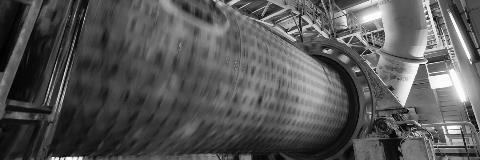

It is estimated that three tonnes of concrete are produced per person, per year, globally [1]. This equates to 23 billion tonnes, making it the most widely consumed construction material. While the embodied carbon by weight of concrete is low in comparison to other building materials, the volume of material produced globally leads to it having the highest carbon footprint [2].
A key component of concrete is cement, which is responsible for 85-90% of the total CO2 emissions in producing concrete [3]. Today the cement industry is the third largest energy consumer and its production, with 4.5 billion tonnes produced in 2019 [4], is estimated to account for up to 7% of global man-made CO2 emissions [5].
In 2001, MAPEI introduced a Cement Additives Division, a line dedicated to providing sustainable solutions for the processing and production of cement which reduces greenhouse gas emissions [6].
ENERGY EFFICIENCY IN CEMENT GRINDING
Australia has one of the highest per capita emissions of greenhouse gas in the world [7], with 70% of electricity derived from coal power. Clinker grinding, a process used to obtain cement, is an energy-intense industry, contributing to 60% of the electricity consumed to manufacture cement [8].
MAPEI Grinding Aid (MA.G.A) products are designed to improve the efficiency of the cement grinding process. Suitable for the use in both tubular and vertical mills, Grinding Aids act to reduce the surface energy forces generated on cement grains during the comminution and prevent re-agglomeration of the particles [9]. MA.G.A. products can increase the production (tons/hour) of cement mills by up to 20%.
MAPEI GRINDING AIDS IN THE AUSTRALIAN CEMENT MARKET, SAVED AN ESTIMATED 15,510 TONNES OF CO2 DURING 2020!Increased efficiency in grinding leads to a reduction of specific energy (kWh/ton) required to produce cement and, consequently, a decrease in electricity generated CO2 emissions to produce a ton of cement.
SUBSTITUTING CLINKER, WITHOUT SUBSTITUTING QUALITY.
Emissions from electricity consumed by grinding operations is only one component of the total emissions from cement manufacturing. In fact, almost 90% of the greenhouse gases are emitted by cement kilns during the manufacturing of clinker, the main component of Portland cement [10]. Raw materials (largely limestone, CaCO3) are decomposed into oxides and CO2 by the addition of heat.
The typical embodied carbon of Portland cement clinker, as shown in the reaction below, is in the order of 866 kg CO2/tonne of clinker producOne powerful tool to reduce the environmental impact of cement, and thus concrete, is clinker substitution with Supplementary Cementing Materials (SCMs). Materials, such as fly-ash, slag, limestone, and pozzolan contribute to the hardened properties of cement through pozzolanic reaction or filler effect. SCMs have far ed [11].
One powerful tool to reduce the environmental impact of cement, and thus concrete, is clinker substitution with Supplementary Cementing Materials (SCMs). Materials, such as fly-ash, slag, limestone, and pozzolan contribute to the hardened properties of cement through pozzolanic reaction or filler effect. SCMs have far less embodied carbon than clinker, being either by product or waste of other industries.
Typically, SCMs result in reduced performance compared to Portland cement due to a reduction of mechanical strength in the early and late stages of concrete aging. MAPEI Performance Enhancers (MA.P.E) and MA.G.A cement additives are formulated to close this performance gap by improving the cement strength, as well as offering improved workability and setting time.
Therefore, MAPEI Cement Additives allow a higher clinker substitution factor, leading to many thousand tonnes of CO2 savings and ultimately making cement and concrete remarkably more sustainable [12].
For Type GL inter-ground cement, AS 3972-2010 allows an upper limit of 20% limestone mineral addition, in contrast with GP cement that only allows 7.5%. In practice, clinker factor reduction has been stagnating over the last few years and GL type cement has not been adopted widely by the industry. As a comparison, in the European market the production of blended cements has been predominant since the 2000s [13].
500,000 TONNES OF CO2 COULD BE SAVED EACH YEAR IN AUSTRALIA IF THE CEMENT INDUSTRY WAS TO REDUCE THE CLINKER FACTOR BY 6%.
MAPEI has the technology and the knowledge in Cement Additives to help the industry moving to higher clinker reduction factors.
Davide Carpenito
National Product Manager - Cement Additives
Mapei Australia